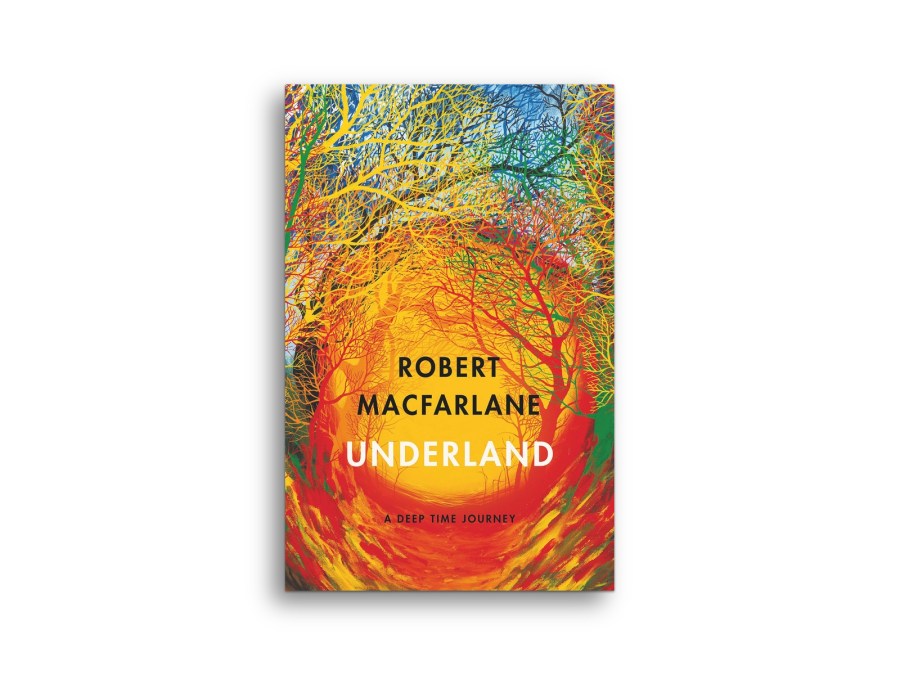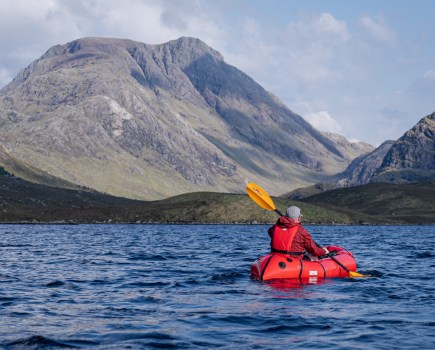Roger Smith reviews a ‘modern epic’ by Robert Macfarlane.
By Roger Smith
This book review was first published in the June 2019 issue of The Great Outdoors.
A new book by Robert Macfarlane is quite an event now, and it was no surprise to find that Underland was chosen as BBC Radio 4’s Book of the Week immediately on release. Robert read the extracts himself and it made interesting listening to hear which extracts he had chosen.
One of them was from the extraordinary story of underground Paris, where there is a whole community living and interacting among the labyrinth of tunnels and passages that any major city holds. Robert spent several days down here and presents a vivid account of what must have been a surreal experience.
This is not the Robert Macfarlane we have been used to, and the book is a marked departure from his previous passionate and lyrical descriptions of wild places. Not that these are entirely missing – his experiences in Arctic Norway and Greenland make gripping reading, and illustrate one of the book’s major themes in trying to tie together the distant past and the unforeseeable future.
Underland is subtitled ‘A Deep Time Journey’. Deep time is what space scientists study, and one section of the book takes us down into a mine from where scientists are trying to pick up the minute traces of evidence that may show us how the universe began.
“We are so bound up with our busyness and involvement of things above ground that we ignore that whole other world – the Underland – that is beneath our feet”
Much of the book takes us below the surface of the earth, into those nether regions which have, since spatial thought started, been associated with things dark and negative. Thus we explore cave systems in the limestone of the Mendip Hills, try to follow the amazing underground rivers of the Slovenian karst, and take a few steps into the apparently bottomless abyss of a glacial ‘moulin’ – a vast hole made as the ice grinds and fragments on its way to the sea. Robert’s description of an event known as ‘calving’, when a huge mass of ice detaches itself from the glacier that has held it for millennia, is as terrifying as it is inspiring. We as humans are responsible for the acceleration of many of these events.
This is a big book – over 450 pages – and was 10 years in the making. It is divided into three sections called Chambers, subtitled ‘Seeing’, ‘Hiding’ and ‘Haunting’. Robert declares his intent early on, saying: “When viewed in deep time, things come alive that seemed inert…. Ice breathes. Rock has tides. Mountains ebb and flow. Stone pulses. We live on a restless earth.”
Much later, on an Arctic summit, he comes back to this: “The immensity and vibrancy of the ice are beyond anything I have encountered before. Seen in deep time the idea of human dominance over the planet seems greedy, delusory.” He quotes Albert Camus saying “the primitive hostility of the world rises up to face us across millennia.”
“this book… moves Robert Macfarlane from being a major contemporary writer on the wild to simply a major contemporary writer”
Is there a message here? It seems to me there is. We are so bound up with our busyness and involvement of things above ground that we ignore that whole other world – the Underland – that is beneath our feet, yet this subterranean world, a wonderland as much as an underland, has a profound effect on us. Robert illustrates this again by means of cave art, those first extraordinary leaps of imagination found in France and Spain. There are many more in the unlikely setting the western Norwegian coast and in a key chapter, Robert risks his life getting to one of them, a remote cave in a seacliff called Kollhellaren, the Hole of Hell. He gets there and is deeply moved by the little stick figures on the cave walls – the ‘red dancers’. “I find myself crying, sobs shuddering my body in the teardrop-shaped rift, far from another human and so close to these generous figures.”
I hope these extracts do something to convey the extraordinary range and scope of this book, which moves Robert Macfarlane from being a major contemporary writer on the wild to simply a major contemporary writer. This is further illustrated in the final chapter of Underland in which he visits the mind-blowing underground storage facility for high-level nuclear waste at Olkiluotro Island in Finland. Here, 1500 feet below the surface, will be buried uranium which is no longer of use to us but which retains its deadliness for an almost inconceivably long time – deep time, in fact. While waiting to get to the island Robert reads the great Finnish epic of myth and legend, the Kalevala, which eerily speaks of caverns in which are stored ‘materials of huge energy’ – an uncanny link from deep past to deep future.
With Underland Robert Macfarlane has created a modern epic, the scope of its research clearly illustrated by the fact that the ‘Select’ bibliography runs to 17 pages. Where will he go next? It will be fascinating to find out.
Underland by Robert Macfarlane is published by Hamish Hamilton (£20).








